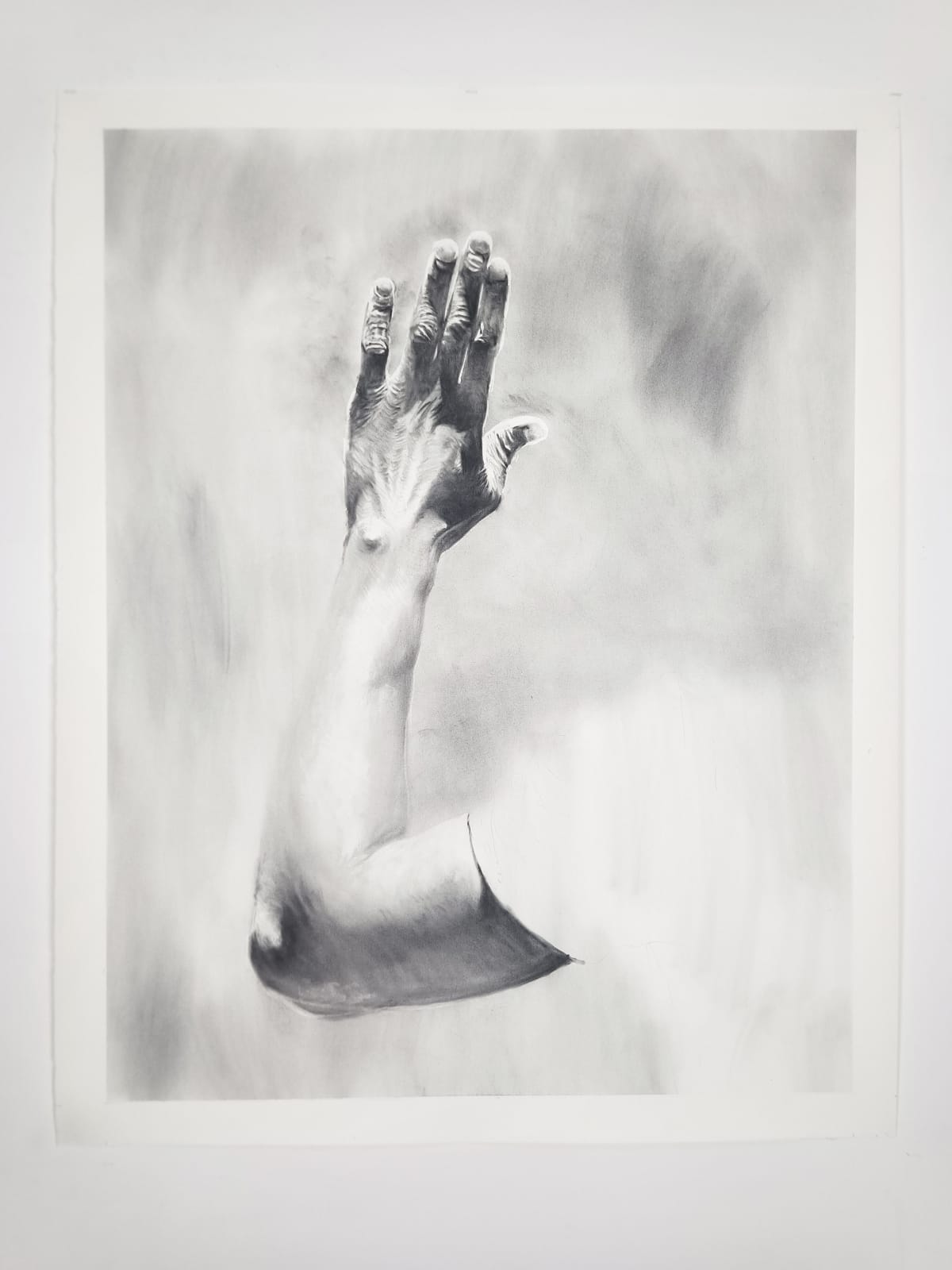
Nidhal Chamekh Tunisian, b. 1985
38.6h x 31.5w in
This series of drawings is based on images and iconographic archives collected for the project Et si Carthage. Hands appear almost naturally, as if by instinct. They speak both to the desire to preserve the anonymity and intimacy of the people depicted, and to the artist’s long-standing engagement with this figure, rooted in his interest in questions of exile.
As Arafat Sadallah noted in 2013, “the presence of hands can only evoke a will to control, to apprehend, but also a self-reflexivity of that control through the cutting and dissection of the figure of the hand.” Here, the hand becomes identity, face, space. It is recorded, classified, restrained by authority. Yet it also embodies temporality: farewells, doubts, waiting. Hands of exile, but also hands of resilience and dignity. The reference images all come from Italy, across different periods — the 1980s, 1990s, and more recent times for Untitled. They were taken in Lampedusa, on the Franco-Italian border, in detention centers, or aboard makeshift vessels. All were “reworked,” recut, adjusted. This gesture, simple as it may seem, is profound:“And this adjustment is in itself what is most political. It is not merely an aesthetic state. But an adjustment that is also a struggle for justice: for a fairer relation to others and to the world.
These four drawings introduce the sculpture series that combines fragments of African masks with Greco-Roman heads. The first two are particularly evocative, featuring a Punic mask and a Greco-Roman head, its face partially worn away. The following two larger drawings expose the Western gaze on Africa, particularly North Africa. This gaze oscillates between fascination with Roman ruins, claimed as rightful heritage, and a desire to dominate indigenous societies, here suggested by the gazelle. A symbol of freedom across several Maghreb countries, the gazelle appears hunted and displayed as spoils.
NEWSLETTER
Get the latest updates on exhibitions, art fairs, events and exclusive content from Selma Feriani Gallery.
* denotes required fields
We will process the personal data you have supplied in accordance with our privacy policy (available on request). You can unsubscribe or change your preferences at any time by clicking the link in our emails.